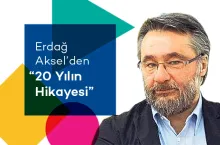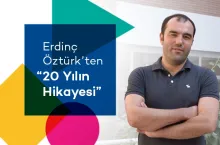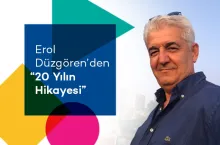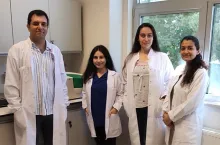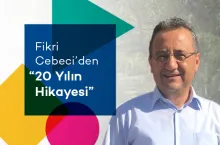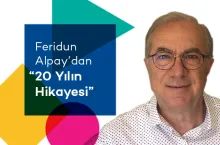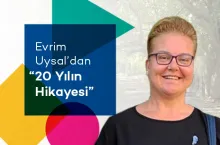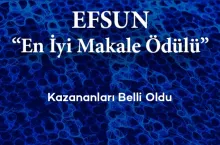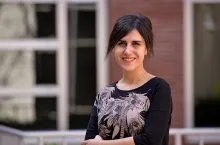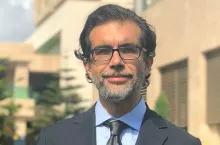14/09/2020
To celebrate the 20th year of our university, we have prepared a set of four questions to ask faculty and administrative personnel who have been with us since the beginning, and to our first students. They all tell "the story of 20 years" from their own perspectives.
Going in alphabetical order, this week's interviewee for "The Story of 20 Years" is Erdağ Aksel.

Erdağ Aksel has been a member of Sabancı University since January 1, 1998. He has been a member of the Sabancı University Faculty of Arts and Social Sciences (FASS) for 22 years, and is currently an Emeritus Professor.
Erdağ Aksel’s answers to our four questions are below.
What was your initial memory / impression of when you met Sabancı University for the first time?
E.A: I was having an exhibition in London. I got a call from my friend Oğuz Babüroğlu, who invited me to the first meeting to be held at the Sabancı Center after the search conference of the university. We were both teaching at Bilkent University at the time. So I changed my ticket and instead of flying straight to Ankara, I had a layover in Istanbul for a night and attended that meeting. There were people in the Art and Social Sciences group that I knew, but then there were others that I had of course heard of, but never met: Şerif Mardin, Nilüfer Göle and Leyla Neyzi. As I was the only artist there, the social scientists first regarded me with a little suspicion. But in the end, that day was when many new friendships were founded.
What are the differences between yourself 20 years ago and yourself today, and how did Sabancı University contribute to that change?
E.A: There is of course the hair going white. Jokes aside, I had joined Bilkent before it had any graduates, and I had worked for ten years in an environment that was fully supportive of my wildest projects and most unconventional suggestions. The Sabancı project excited me as well. When you are young, you feel that you can -and should- do everything. Within twenty years, I learned how to identify what will become reality and what will remain a dream as every project goes from design to implementation. I think the greatest contribution of the university project was to teach me to stop dwelling on what can't be done, and focus on doing what can be in the most professional and genuine way possible.
What comes into your mind when you think of Sabancı University in 20 years? What are your dreams for Sabancı University for the next 20 years? What about yourself?
E.A: The first thing that comes to my mind is an institution where the common dream that brought people together has mostly been realized, new traditions have been born, and quality has reached an impressive level.
As for myself, my dreams are much more low-key. Going on long walks, spending time with friends. Working in my studio to some music that I love, making hundreds of sketches for works of art that I perhaps will never have time to complete.
Where and how would you be now if your paths hadn't crossed with Sabancı University?
E.A: As I said in my Emeritus ceremony speech, when life brings you to an environment where overlock operators are more in demand than artists, teaching is a worthy side job. Therefore, if it were not for Sabancı University, I would have been teaching at Bilkent or some school in the US.

